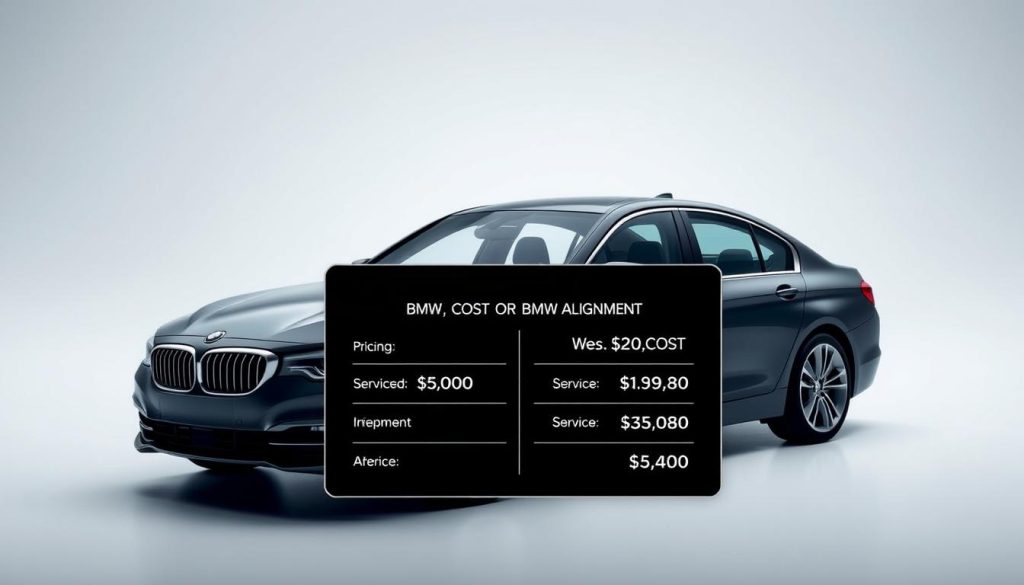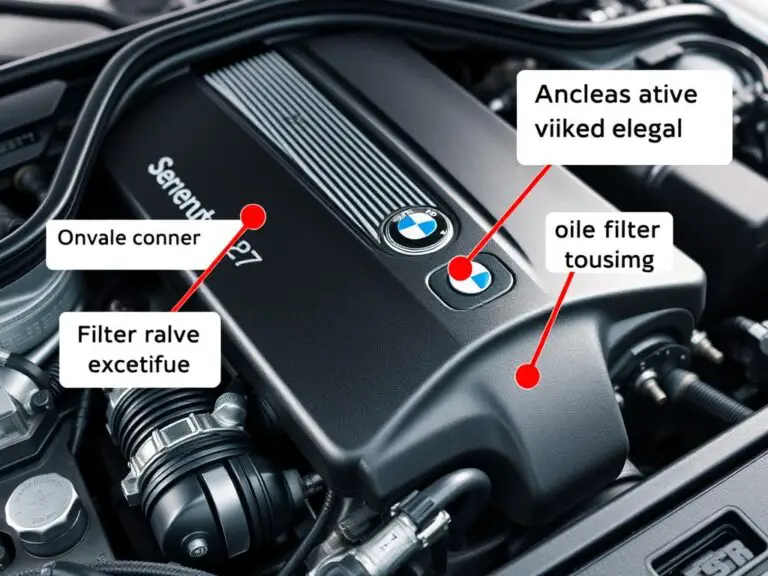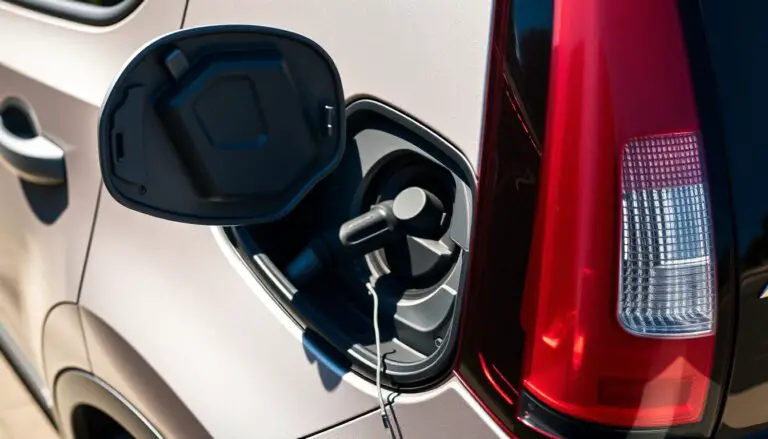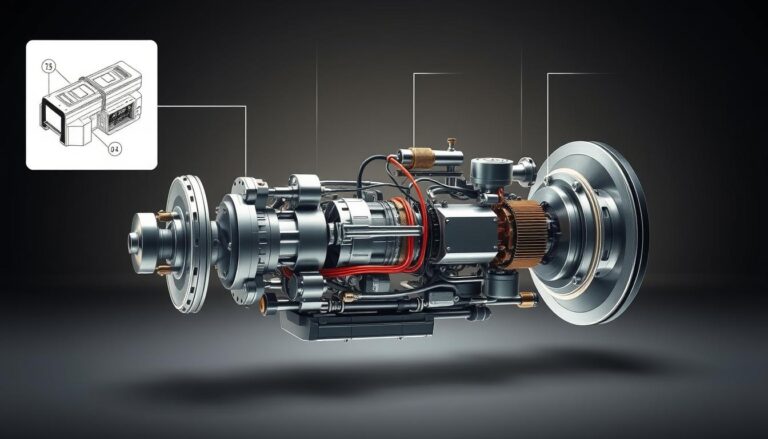Proper wheel alignment is paramount for the longevity and performance of your vehicle. Misalignment precipitates uneven tire wear, diminishes fuel efficiency, and impairs handling. Grasping the BMW alignment cost is imperative for effective financial planning and maintenance.
Regular maintenance, encompassing wheel alignment, is critical to guarantee your BMW’s optimal performance and efficiency. The alignment cost fluctuates, influenced by various factors, including the model and year of your vehicle.
Key Takeaways
- Proper wheel alignment is essential for vehicle longevity and performance.
- Misalignment can cause uneven tire wear and reduced fuel efficiency.
- Understanding BMW alignment costs helps with budgeting for maintenance.
- Regular maintenance ensures your BMW runs smoothly and efficiently.
- Alignment costs can vary based on the BMW model and year.
Understanding BMW Wheel Alignment
The significance of wheel alignment is paramount, notably for BMW enthusiasts who prioritize precision and performance. Adequate wheel alignment guarantees that your vehicle’s handling is optimal, tire wear is even, and the ride is smooth.
What Is Wheel Alignment and Why It Matters
Wheel alignment pertains to the adjustment of your BMW’s suspension, the apparatus linking your vehicle to its wheels. Proper alignment ensures that your wheels are perpendicular to the road and parallel to each other. Misalignment precipitates uneven tire wear, diminishes fuel efficiency, and impairs handling. For BMW aficionados, upholding correct wheel alignment is imperative for maintaining the vehicle’s engineered performance and safety attributes.
BMW-Specific Alignment Requirements
BMW vehicles necessitate specific alignment requirements due to their advanced suspension systems. Contemporary BMWs often incorporate intricate suspension designs, such as adaptive suspension and xDrive technology, which necessitate precise alignment for peak performance. Neglecting these requirements can result in subpar handling and potentially compromise the vehicle’s safety attributes.
Signs Your BMW Needs an Alignment
Several indicators suggest that your BMW may require a wheel alignment. These include:
- Uneven or rapid tire wear
- The vehicle pulling to one side while driving on a straight road
- A steering wheel that’s off-center when driving straight
- Unusual noises or vibrations from the tires or suspension
If you observe any of these symptoms, it is crucial to have your BMW’s wheel alignment inspected by a professional.
Performance Impact of Misalignment
Misalignment can significantly impair your BMW’s performance. It can result in diminished handling precision, extended stopping distances, and decreased overall driving dynamics. For performance-oriented BMW models, misalignment can be notably detrimental, compromising the vehicle’s acceleration, cornering capabilities, and braking performance.
| Signs of Misalignment | Performance Impact |
|---|---|
| Uneven tire wear | Reduced tire life, decreased fuel efficiency |
| Vehicle pulling to one side | Compromised handling, increased driver fatigue |
| Off-center steering wheel | Reduced driving precision, safety concerns |

The Average BMW Alignment Cost Breakdown
The cost of aligning a BMW is influenced by several variables, including the service provider type and the vehicle model. Grasping these factors is crucial for making an informed decision regarding your BMW’s alignment maintenance.
Dealership vs. Independent Shop Pricing
The cost of BMW alignment is significantly affected by whether one selects a dealership or an independent shop. Dealerships, with their specialized equipment and manufacturer-trained technicians, typically charge more. In contrast, independent shops may offer more competitive pricing but lack the brand-specific expertise of dealerships.
Comparing prices between dealerships and independent shops reveals a 10% to 30% price difference in favor of dealerships. This disparity is influenced by location, BMW model, and the shop’s reputation.
| Service Provider | Average Cost | Range |
|---|---|---|
| Dealership | $150 | $120-$200 |
| Independent Shop | $120 | $100-$150 |
Cost Variations by BMW Model
The alignment cost for BMWs varies significantly based on the model. Luxury models and those with advanced suspension systems tend to incur higher costs.
Luxury Models vs. Standard Models
Luxury BMW models, equipped with advanced technology and suspension systems, require more expensive alignment procedures. Models with adaptive suspension necessitate specialized equipment, increasing the cost.
In contrast, standard BMW models without advanced features have lower alignment costs. The cost difference can be substantial, with luxury models sometimes costing 20% to 50% more to align than their standard counterparts.

What’s Included in a Standard Alignment Service
A standard BMW alignment service includes a thorough inspection of the vehicle’s suspension and steering systems. It involves adjusting the camber, toe, and caster as necessary and a test drive to ensure proper alignment.
It is important to note that while the core elements of a standard alignment service remain consistent across different providers, some may offer additional checks or services. These can include tire pressure monitoring or a more detailed suspension inspection.
Factors That Influence BMW Alignment Pricing
BMW alignment pricing is not a one-size-fits-all figure; it’s influenced by multiple factors. Understanding these factors can help BMW owners anticipate and budget for the costs associated with wheel alignment.
Geographic Location Differences
The cost of living and doing business varies significantly across different geographic locations. Urban areas, notably those with a high cost of living, tend to have higher labor rates. This can increase the cost of BMW alignment services.
A study by AAA found that automotive repair services, including wheel alignments, can be up to 20% more expensive in major cities compared to rural areas.
Vehicle Age and Condition
The age and condition of a BMW can also impact alignment costs. Older vehicles or those with worn-out suspension components may require additional repairs or adjustments, increasing the overall cost.
“The condition of the vehicle plays a significant role in determining the alignment cost. Older vehicles may need more extensive work, including replacement of parts.” –
Type of Alignment Needed
BMW vehicles may require different types of alignments, such as front-end, thrust, or four-wheel alignment. The type needed depends on the vehicle’s drivetrain and suspension system.
- Front-end alignment: Adjusts the front wheels to the manufacturer’s specifications.
- Four-wheel alignment: Aligns all four wheels for optimal performance and even tire wear.
Recent Market Trends Affecting Prices
Market trends, including fluctuations in the cost of materials and labor, can also affect BMW alignment pricing. Recent supply chain disruptions have led to increased costs for automotive parts. This can be reflected in the pricing of alignment services.
| Factor | Impact on Alignment Cost |
|---|---|
| Geographic Location | Higher labor rates in urban areas |
| Vehicle Age and Condition | Additional repairs needed for older or worn-out vehicles |
| Type of Alignment | Complexity and number of wheels aligned |
| Market Trends | Fluctuations in material and labor costs |
By understanding these factors, BMW owners can better navigate the process of getting their vehicle aligned and anticipate the associated costs.
BMW’s Advanced Suspension Technology and Alignment Considerations
BMW’s relentless pursuit of innovation in suspension technology necessitates a deeper understanding of its effects on wheel alignment. The company’s dedication to elevating performance and comfort has spawned the creation of cutting-edge suspension systems, such as xDrive and adaptive suspension. These systems are pivotal in achieving the brand’s hallmark of exceptional handling and ride quality.
Impact of xDrive and Adaptive Suspension Systems
The synergy between BMW’s xDrive all-wheel-drive system and its adaptive suspension technology is instrumental in delivering unparalleled handling and ride quality. Yet, these sophisticated systems introduce intricate complexities in wheel alignment. The xDrive system, for example, necessitates meticulous alignment to guarantee even power distribution and to prevent uneven tire wear. Adaptive suspension systems, which dynamically adjust damping rates, also demand precise alignment to operate at peak efficiency.
Special Equipment Requirements for Modern BMWs
Aligning contemporary BMWs necessitates specialized equipment that can accommodate their advanced suspension systems. Modern alignment tools must be capable of interfacing with the vehicle’s onboard computer to ensure proper calibration. This may involve utilizing manufacturer-approved equipment and software to align vehicles according to BMW’s exacting specifications.
Manufacturer Recommendations and Updates
BMW frequently updates its recommendations for suspension alignment and repair procedures. Technicians must remain abreast of the latest technical bulletins and service information to adhere to manufacturer standards. This entails understanding specific requirements for various BMW models and years.
| BMW Model | Suspension Type | Alignment Requirements |
|---|---|---|
| 3 Series | Adaptive Suspension | Requires specialized alignment tool |
| X5 | xDrive with Adaptive Suspension | Needs calibration with onboard computer |
| 7 Series | Advanced Adaptive Suspension | Requires latest software updates for alignment |
Conclusion: Investing in Proper BMW Alignment
The significance of proper BMW alignment cannot be overstated, as it directly impacts the vehicle’s performance, safety, and longevity. Various elements influence the cost of BMW alignment, including the pricing disparity between dealership and independent shops, geographical location, and the age of the vehicle.
Investing in BMW alignment is imperative to avert uneven tire wear, enhance fuel efficiency, and guarantee a smooth ride. The advanced suspension technology employed by BMW, such as xDrive and Adaptive Suspension Systems, necessitates specialized consideration and equipment for alignment.
Regular BMW maintenance, encompassing alignment checks, is critical to prolong the vehicle’s lifespan. By comprehending the importance of proper BMW alignment and committing to regular maintenance, BMW owners can ensure optimal performance, safety, and comfort.
FAQ
What is the average cost of a BMW alignment?
The cost of a BMW alignment varies, influenced by model, location, and alignment type. It typically falls between 0 and 0.
How often should I get my BMW aligned?
BMW advises an alignment every 12,000 to 15,000 miles. It’s also necessary upon noticing uneven tire wear or vehicle pull to one side.
Can I get my BMW aligned at any repair shop?
While possible at various shops, it’s advisable to select a BMW-specialized facility. This is crucial for models with advanced systems like xDrive or adaptive suspension.
What are the signs that my BMW needs an alignment?
Indicators of misalignment include uneven tire wear, vehicle pull to one side, or a crooked steering wheel when driving straight.
How does BMW’s advanced suspension technology affect alignment?
BMW’s sophisticated suspension systems, including xDrive and adaptive suspension, demand specialized attention during alignment. They may require unique equipment for proper alignment.
Can misalignment affect my BMW’s performance?
Misalignment can significantly impair your BMW’s performance. It leads to reduced handling, decreased fuel efficiency, and increased wear on suspension components.
Are there any additional costs associated with BMW alignment?
Additional expenses may arise if your BMW requires suspension component repairs or replacements. Complex alignment procedures, like four-wheel alignment, also incur higher costs.
Can I prevent misalignment in my BMW?
While some misalignment causes are unavoidable, regular maintenance can help prevent it. This includes checking tire pressure and rotating tires.


